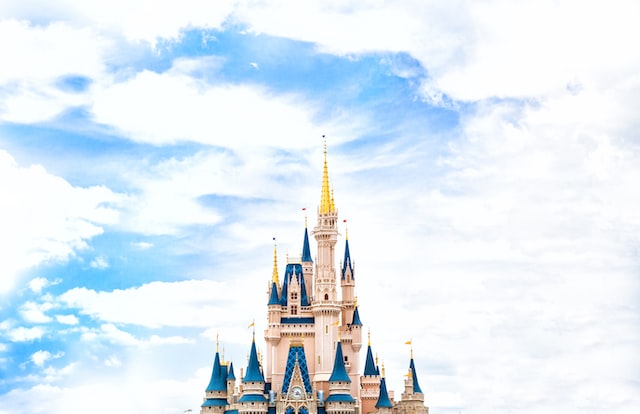Walt Disney (December 5, 1901 - December 15, 1966), also known as Walter Elias Disney, was an American animator, entrepreneur, director, producer, founder of the world-famous Walt Disney Company, born in Chicago, Illinois, USA. He was an American animator, entrepreneur, director, producer, screenwriter, voice actor, cartoon designer, founder of the world-famous Walt Disney Company, and an elder loved and remembered by the American people.

With 56 Academy Award nominations and 7 Emmy Awards, Walt Disney is the world's most decorated Oscar winner. Walt had 2 daughters, Diane Disney and Sharon Disney (Sharon was his adopted child). Together with his staff, he created many famous and popular cartoon characters, including Mickey Mouse, the classic cartoon character loved by millions and Walt Disney's best friend.
Walt Disney was born on 5 December 1901 in Chicago, Illinois, USA. In 1918, the United States entered World War I. His father Elias often asked him to work with his older brothers. His third brother Roy, who was 25 years old at the time, immediately enlisted in the army and went overseas to fight. In July of that year, after graduating from high school, Walt visited Roy, who was training at the Oto Naval Base on the edge of Chicago, and Roy told Walt some stories about the war overseas, and Walt's interest in joining the army grew. He decided that day that he wanted to enlist. As the recruiter had questions about Walt's age, he was asked to produce his birth certificate. Unable to find an accurate certificate, Walt Disney imitated his parents' signatures and became a volunteer soldier with the International Committee of the Red Cross.
After his military service, Walt returned to Chicago. This was followed by a return to Kansas, where he had lived as a child, and it was here that Walt really started his business. After arriving in Kansas, Walt was introduced by his third brother Roy as a painter at an advertising agency called Pesmen Rubin Commercial Art Studio.
In 1920, Walt and a colleague, Ub Iwerks, who was also working at Pesmen Rubin at the time, formed Iwerks Disney, a commercial art company. Commercial Art went out of business within a month of its inception.

Walt then joined the Kansas City Advertising Agency where he learned the basic techniques of filmmaking and animation.
Walt established Laugh-O-Gram Films and successfully distributed the company's animated shorts through film distributor Frank Newman, and on May 23, 1922, Walt obtained Ubb's permission to incorporate the remaining assets of Ewoks-Disney Commercial Arts into Laugh-O-Gram Films. At Laughing Animation, Walt animated Little Joy (Laugh-O-Grams) and sold it to a Kansas City distributor.
In July 1923, Walt Disney arrived in Los Angeles, ready to make his way in Hollywood.
Upon arriving in Los Angeles, Walt Disney and his brother Roy Disney founded Disney Brothers Studio and went on to produce the Alice in Toonland animation series.
On 25 July 1925, Walt Disney married Lillian Bounds, a female employee of the studio, in Idaho. After returning to Hollywood on their honeymoon, Walt Disney decided to change the name of the Disney Brothers Company to Walt Disney Studios, as he felt that a single name would be more appealing than one with the word "Brothers" in it.

In 1926, a new studio was built in Seaburyne. The Disney brothers then began animating the Osward the Lucky Rabbit series on the new set.
In 1927 Osward the Lucky Rabbit was so well received that in February 1928 Walt Disney took Lillian to New York to discuss a renewal of the contract with the distributor Charles Mintz. Walt originally wanted to raise the price, but Mintz asked Walt to lower it, telling Walt that he had bought out most of the Oswald the Lucky Rabbit production staff and that he owned the rights to the series under contract, and that he could continue to produce Oswald the Lucky Rabbit himself if Walt did not agree to the price reduction.
On the train back to Hollywood, Walt Disney was inspired to create a cartoon based on the mouse, Mortimer Mouse, which was later renamed Mickey Mouse at Lillian's suggestion.
In March 1928, Walt began work on the first Mickey series, Plane Crazy. This was followed by a second series, Gallopin Gaucho. As the response to these two animations was limited and sound films were just beginning to emerge, Walt decided to use Patrick Bowers' method of voicing the third Mickey series, Steamboat Willie, to create the world's first sound animation. The response was unprecedented!
In 1929, in addition to continuing the Mickey series of animation, Walt began work on a new series of animated shorts called Silly Symphony in order to increase his liquidity.
In 1930, a New York businessman named George Borgfeldt purchased the rights to use Mickey and Minnie's images on toys, books and clothing from Disney Studios in order to give his children a Christmas present. Walt Disney then licensed the publishing and distribution of Mickey's publications to the Byblow-Lane Publishing Company of New York.

In 1931, Technicolor invented a colour film-making technique. Walt began to consider filming in colour animation. On 30 July 1932, he used this technique to produce Flowers and Trees, the world's first colour animation. In the same year, the Academy of Motion Picture Arts and Sciences awarded Walt a special Oscar in recognition of his creation of Mickey, and in 1933 Walt presented the animation Three Little Pigs. On 9 June 1934, Walt released the animated short The Wise Little Hen, in which Donald Duck appeared for the first time, and on 23 February 1935, Walt released the first colour Mickey animation, Mickey's Concert. On 31 December 1936, Walt's second daughter, Sharon Mae Disney, was born (actually adopted by Disney in January 1937 when Sharon was two weeks old).
The Golden Age
On 21 December 1937, Walt officially launched Snow White and the Seven Dwarfs, the first full-length animated film in cinema history, at the Carthay Circle Theater in Hollywood.
On 7 February 1940, Walt launched his second feature-length animated film, Pinocchio. The world's first film to use stereo sound, Fantasia, was released on 13 November of the same year.
In 1941, Walt visited Central and South America as a goodwill ambassador for the US government and led the creation of the film Fantasia, which won a special Oscar for the third time. On 23 October of that year, Walt released his fourth feature-length animation, Dumbo (Dumbo).
On 12 November 1946, Walt also released Song of the South, the studio's first live-action and animation film. In addition, Walt made a number of propaganda films for the US government during this period.
After the end of World War II, many of those who had served in the army returned to help Walt with his films, and on 15 February 1950, Disney again released a feature-length animated film, The Fairy Tale, which began Walt's golden age of animation. In the next decade or so, Walt produced Peter Pan, Lady and the Tramp, Sleeping Beauty, 101 Faithful Dogs and The Jungle Book, and on 19 July 1950, Walt released Disney's first live action film, Treasure Island. On 29 August 1964, Walt also released Mary Poppins, a live-action and animated film starring Julie Andrews, which was the most successful Disney film in the history of cinema. In addition, Walt began airing The Wonderful World of Disney on television.
Later career
During this time, Walt also created the world's first Disney theme park, Disneyland, in Anaheim, California, USA, on 17 July 1955, and began planning for Disney World in Orlando, Florida, USA. Disney World (later changed by Roy Disney to Walt Disney World).

On 15 December 1966, ten days after his 65th birthday, Walt Disney died of a myocardial infarction after failing to recover from lung cancer. Walt's body was cremated and his ashes were buried in a small, overgrown plot in Glendale's Forest Cemetery, where a small memorial tablet was erected. As all arrangements for Walt's death were not made public at the time, rumours persisted for years that his remains had been quick-frozen. Many people were reluctant to believe that Mr. Disney was really dead, and some even said that he would suddenly appear before us one day.